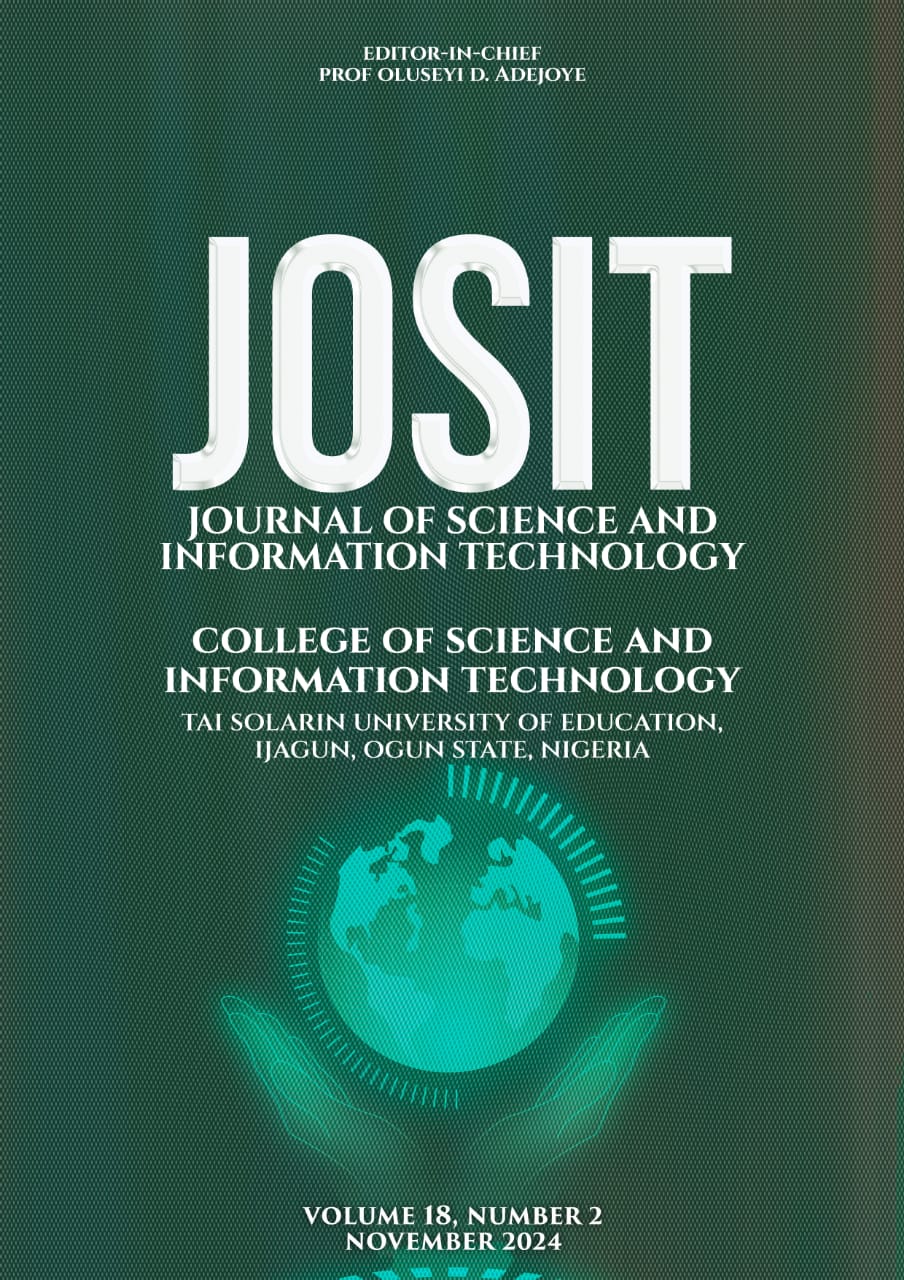Isolation, Acetylation and Characterization of Cellulose obtained from BeanPod (Phaseoulus vulgaris)
Keywords:
Isolation, Acetylation, Cellulose, Cellulose acetate, Bean pods.Abstract
Bio-polymers have gained attention as sustainable substitutes for petroleum-based polymers due to the rising need for environmentally friendly materials. Thus, the overall objective of this research was to prepare cellulose acetate from the cellulose obtained from bean pods (Phaseolus vulgaris Linn.), an agricultural waste. Cellulose was extracted through sequential chemical processes to eliminate hemicellulose, lignin, and other non-cellulosic substances. Acetic anhydride was used to acetylate the cellulose under a range of temperature (30–60 °C), reaction time (20–70 min), pH (9.0–13.0), and concentration (0.112–0.520 M) conditions so as to ascertain the degree of substitution (DS). The acetic anhydride concentration of 0.305 M, reaction duration of 50 min, temperature of 60 °C, and pH of 12.0 were the optimum parameters for acetylation, resulting in a maximum degree of substitution of 0.28. FTIR confirmed successful acetylation with the existence of carbonyl (C=O) bands of absorption at 1732–1742 cm⁻¹. The SEM demonstrated notable morphological changes, with cellulose acetate displaying a smooth surface in contrast to the rough morphology of cellulose isolated from bean pods. XRD analysis confirmed cellulose acetate's amorphous nature and cellulose's crystalline structure. These results highlight bean pods' potential as an inexpensive, sustainable feedstock for the production of cellulose and cellulose acetate, enabling a useful route for the value-adding of agricultural waste and the creation of biodegradable materials for a range of industrial uses.

